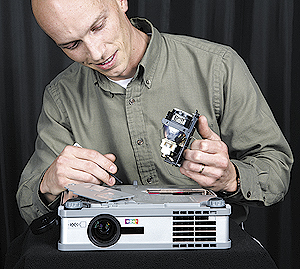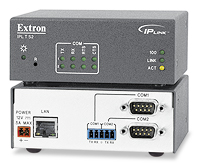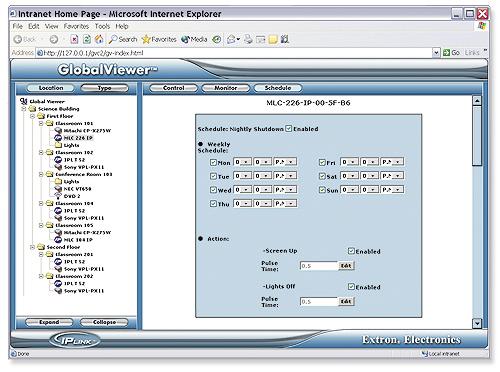One of the key factors used in determining whether or not to purchase new classroom technology is a calculation of Return on Investment, or ROI. While there are many factors to consider, ROI generally falls into two main categories: hard returns, which can be demonstrated in financial terms, and soft returns that are less tangible, but no less important, benefits to students, teachers, and administrators. Evaluating both types is an indispensable part of the decision-making process. The focus of this article is hard ROI: how to realistically calculate returns in real dollars and what to look for when evaluating new classroom AV technology in order to maximize returns.

Return on Investment, or ROI
ROI is a calculation used to determine whether a proposed investment is wise, based on how well it will repay the investor.
Hard ROI is a return on investment that is quantifiable and can be demonstrated in financial terms, such as cost savings or increased revenue.
There are benefits to deploying AV systems in educational and business settings and those benefits are creating an increasing demand for AV equipment. Before deciding to move forward with an investment in technology, it must be determined whether the added value resulting from the new technology is worth the cost. But how will you measure your return on investment? Are you expecting reduced costs, better team work, higher grades, reduced project timeframes, or increased profits? You'll be more likely to realize the added value of technology if you carefully quantify your expectations.
Network Integration
The key to controlling AV system costs is the ability to remotely monitor and control AV devices using the school's existing network. One way to accomplish this is to use Extron's IP Link® hardware and GlobalViewer® software, a powerful Web-based application for flexible and easy to use AV resource management and remote monitoring.
GlobalViewer can help reduce both the operational and capital costs of AV systems. The most direct operational cost savings come from extending projector lamp life and reduced electricity bills, while capital costs are kept in check through theft deterrence.
Operational Cost Savings
When conference room and classroom displays, projectors, and other devices are left on when not in use, the wasted electrical and maintenance costs are a significant part of many operational budgets. The free Extron GlobalViewer Web application and IP Link interfaces work together to help reduce these costs by providing scheduled shutdowns during closed hours and during periods of inactivity. The following scenarios demonstrate the potential savings in each category.
Cost Savings - Extended Lamp Life
One of the quickest and most easily verifiable pay backs of network integration is the cost savings in projector lamps. Projector lamps cost between $300 and $500 each and have an average life of about 1,500 hours. Assuming the projector is in use 5 hours a day for 200 days during the year, that's 1,000 hours of use. It is easy to waste the remaining 500 hours of lamp life through unnecessary nighttime and weekend hours, reducing the typical projector lamp life to about one year. After-hours time adds up quickly; a projector left on overnight wastes as much as 15 lamp hours, while a projector left on over a weekend wastes more than 60 hours. Here are two sample calculations:
1. Projector left on overnight
A projector is left on overnight 2 nights a month; this equals 15 hours x 2 nights x 12 months a year = 360 hours wasted annually.
2. Projector left on over the weekend
A projector is left on over a weekend 5 times during the year; this adds up to 63 hours x 5 weekends per year = 315 hours wasted annually.
This example shows how the grand total of wasted lamp hours every year for each projector can easily be 675 hours. This wastes 45% of the lamp's useful life and costs you $180; 45% of the $400 lamp.
Cost Savings - Electricity
The U.S. national average cost of electricity is 14 cents per kilowatt hour. The typical projector uses about 250 watts, times our theoretical 675 hours of waste divided by 1,000, equals $23 dollars of electricity wasted every year, for every projector.
Adding together the lost dollars for shortened lamp life and wasted electricity costs total $203 annually per projector. And these are just the wasted energy dollar estimates for the projector. The estimated wasted energy from displays, computers, document cameras, DVD players, and other equipment can be added in.
All of these devices could be monitored and controlled remotely using an Ethernet- enabled controller with IR and RS-232 output, such as the Extron IPL T S2. It can remotely control and monitor the display and other AV devices in the room. There are other costs are harder to quantify such as maintenance labor costs for extra lamp replacements and additional projector filter cleanings. The $203 estimate is conservative.

Ethernet Control Interface
Cost Savings - Reduced Theft
The decreasing size and increasing popularity of projectors has led to a wave of projector theft on campuses around the country. Taking steps to safeguard one of the most expensive pieces of equipment in the room is just common sense.
Extron IP Link-enabled MediaLink Controllers and Ethernet interfaces are always on and routinely poll their attached devices for status information. If any serially controlled device such as a projector or document camera is physically disconnected from the network, GlobalViewer software will know immediately and can send an e-mail message notifying security personnel of a possible theft. For fast action, e-mails can be sent to multiple addresses including cell phones and wireless PDAs
Estimated Payoff: A large installation might save 5 projectors per year, or about $5,000 - $10,000, for an average of $7,500.
Total Estimated Hard ROI:
Lamp hour savings plus electrical savings ($180 + $23) = $203/year. That's $20,300 in annual savings for 100 projectors plus $7,500 savings for theft, for an estimated total $27,800 annual savings per 100 projectors or $278 in annual savings per projector.
The following table summarizes these estimates for an organization with 100 projectors to manage and maintain:
| Category | Dollars |
|---|---|
| Lamp hours | $18,000.00 |
| Electricity | $ 2,300.00 |
| Theft deterrence | $ 7,500.00 |
| Total | $27,800.00 |
Ensuring Maximum Return on Investment
As we have demonstrated, classroom technology that includes Web-based remote monitoring and resource management capabilites provides sufficient hard dollar savings to justify the investment required to acquire it.

 Download the story PDF format – 1.0 MB
Download the story PDF format – 1.0 MB